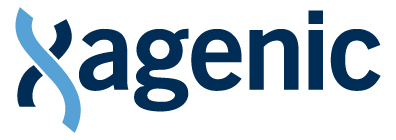Market research company lauds start-up for developing a breakthrough workflow while dramatically improving point-of-care diagnosis
 (MOUNTAIN VIEW, Calif) May 20, 2014 — Based on its recent analysis of the point-of-care diagnostics market, Frost & Sullivan recognizes Xagenic Inc. with the 2014 North America Frost & Sullivan Award for New Product Innovation Leadership.
(MOUNTAIN VIEW, Calif) May 20, 2014 — Based on its recent analysis of the point-of-care diagnostics market, Frost & Sullivan recognizes Xagenic Inc. with the 2014 North America Frost & Sullivan Award for New Product Innovation Leadership.
Xagenic’s revolutionary product, the Xagenic X1™ system, is a point-of-care platform with intuitive features to provide lab-free molecular diagnostic testing. It is unique as a low-cost, simple, rapid sample-to-answer desktop instrument, requiring no manual sample processing or cold storage. Currently, the platform is in the beta-testing phase and is expected to launch between 2015 and 2016.
Dr. Shana Kelley and Xagenic were featured in the Globe and Mail on May 20, 2014.
Read the detailed Frost & Sullivan Best Practices Research Report report on Xagenic’s website. Xagenic is MaRS Innovation’s lead start-up company, in partnership with the University of Toronto: Xagenic news archive.
For its portfolio of cartridge-based tests, Xagenic focuses on infectious diseases (HSV 1+2, Flu A+B, CT/NG, strep A, group B strep, trichomoniasis, HCV and upper respiratory infections) that will benefit the most from rapid on-site testing. The company also intends to apply the platform to counter a critical public health threat—antimicrobial resistance.
Most automated molecular diagnostics platforms revolve around automating polymerase chain reaction (PCR); however, this approach has proved inadequate for bringing molecular testing to the point of care. Acknowledging the demands of the point-of-care market, Xagenic has designed a technology platform specifically for the application’s needs.
“Xagenic’s technology is comparable with the PCR technology’s performance in terms of specificity and sensitivity, and outperforms it in speed, simplicity, size, ease of use, cost, and compatibility with an office setting,” said Frost & Sullivan Senior Industry Analyst Christi Bird. “It is ideal for a physician’s office setting, as it has a turnaround time of 15-20 minutes and cartridge pricing that allows for sufficient profit margin within existing US reimbursement and platform costs.”
At the heart of Xagenic’s much anticipated platform is the company’s proprietary Amplified Redox Assay (AuRA™) detection technology, based on ultrasensitive microelectrode arrays. The system is completely automated using Xagenic’s disposable chip-based cartridge containing all the necessary assay reagents. No sample extraction or preparation is needed to run the cartridge, as Xagenic’s approach eliminates the need for enzymatic nucleic acid amplification and does not use optical detection components.
As there are no biological reagents, shipping and storage of cartridges do not require refrigeration, increasing the shelf life and practicality for physician office use. The cartridge is designed to accommodate a variety of specimen types, cell types and targets, which enables Xagenic to expand its menu of tests without major modifications. Furthermore, the system is extremely simple to use, as it employs no complex microfluidics and requires no training.
“Overall, Xagenic’s near-patient molecular diagnostics system will aid decentralization of diagnostic testing, allow physicians to determine patients’ best treatment option in a single consultation, reduce costs, save time, decrease time to wellness, and improve patient outcomes,” noted Bird.
“We have made remarkable progress since our inception just four years ago, and it is truly rewarding to be recognized for our accomplishments by such a reputable firm,” said Ihor Boszko, Xagenic’s vice-president of Business Development. “This Frost & Sullivan award is a testament to the talented team at Xagenic that continues to execute on our technical and clinical milestones in advance of our commercial launch.”
Frost & Sullivan Best Practices Awards recognize companies in a variety of regional and global markets for demonstrating outstanding achievement and superior performance in areas such as leadership, technological innovation, customer service and strategic product development. Industry analysts compare market participants and measure performance through in-depth interviews, analysis and extensive secondary research to identify best practices in the industry.
Posted by Elizabeth Monier-Williams, director of marketing and communications.

